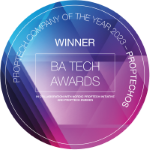Investing in a more sustainable future for our planet should not simply be a ‘tick-box’ exercise for commercial real estate executives. Efforts should be made at all costs to improve the sustainability of portfolios and invest in ESG green building infrastructure.
At ProptechOS, we know that the pressure to decarbonize properties doesn’t just stem from regulators and investors; tenants also want to see meaningful progress towards sustainable goals. In fact, tenants will actively seek out and pay a premium for commercial space in green-certified buildings.
CRE landlords that can get ahead and invest in green office stock have a significant commercial advantage in today’s environmentally conscious property market while decarbonizing their portfolio and ensuring compliance with environmental reporting legislation such as the EU’s CSRD directive.
So, what are modern tenants looking for in green-certified buildings, and how can CRE best serve this need? This article will explain how your business can future-proof its operations with industry-leading, low-carbon spaces.
The new tenant mindset: Beyond basic sustainability promises
There are plenty of compelling reasons why a commercial tenant would actively prioritize green-certified buildings in the rental market. Businesses that consistently take genuine action towards ESG initiatives and show commitment towards sustainability can create an enhanced reputation for themselves in a competitive and eco-conscious market.
Why conventional “greenwashing” no longer cuts it
Although businesses naturally transition towards eco-friendly office space, CRE organizations cannot rest on their laurels. In the age of greenwashing, it is no longer enough to market a building in the rental market based on its sustainability value without the credentials to support it.
This is where environmental benchmarking comes in. A green-certified building verified with the BREEAM or LEED labels avoids all doubt about the building’s sustainability. The rigorous testing and validation methods employed by the Building Research Establishment and US Green Building Council respectively reward only structures that meet the highest sustainability standards.
How modern workplace preferences are pushing CRE sustainability goals
While the anti-greenwashing agenda is significant in the context of driving sustainability within CRE, it is important to note that fundamental changes within workplace practices are also impacting tenants’ requirements. The COVID-19 pandemic redefined our relationship with the office, and today, more than 70% of US companies now offer their employees a hybrid working scheme.
While tech giants like Amazon and Dell are bucking the trend in favor of returns to the office for all staff, there is an undeniable shift among businesses towards remote work, demanded by millennial and Gen Z employees who value the improved work-life balance that comes with office intermittency. In the four years since pandemic restrictions were lifted, CRE businesses have had to adjust to record-high office occupancy rates. In 2024, one in five US office buildings sat empty, according to Moodys.
In this environment, sustainable office space is becoming essential, not just to offset the reduced rents with lower operating costs, but to continue to attract millennial and Gen Z workers who are consciously choosing sustainable workplace practices. According to a Deloitte survey, more than 40% of employees in this demographic have considered changing jobs if their organization lags behind on sustainability initiatives.
The digital backbone of green-certified buildings
As our relationship with the built environment shifts in the post-pandemic world, commercial buildings must adapt to flexible usage and according to demand. Green-certified buildings benefit from advanced technological solutions that optimize energy consumption according to demand. The high-tech digital backbone of these industry leaders sets the standard for sustainability.
Integration of green tech with building management systems
Data has become essential in facilities management; proptech solutions are reliant on reading building performance data to identify areas for optimization. Sophisticated Internet of Things (IoT) networks powered by sensor-driven technology analyze every aspect of building operations, from occupancy statistics to waste management.
A smart building management system (BMS) is usually the beating heart of a high-tech, green-certified building. It draws in all the data from the IoT network and critical building systems such as HVAC, fire, and security panels to provide FM teams with all the information they need to make informed decisions about building performance.
Real-time environmental monitoring
Proptech in green-certified buildings can track occupancy levels in real-time and adjust building conditions to save energy, turning off the lights and removing temperature controls. These systems alone can offer 15-30% energy savings within a year of operation. Commercial buildings can also utilize environmental control systems to monitor and regulate indoor conditions, improving energy efficiency by as much as 30% per year with Energy Star-certified equipment.
Smart money follows green certification
In today’s ultra-competitive CRE sector, there is a tangible benefit to owning high-quality, green-certified office stock. Green buildings with advanced environmental control systems promote tenant health and well-being by regulating light, temperature, and air quality. They command a tangible sales premium – up to 10%, and can attract potential hires looking to work in eco-friendly spaces.
The market reality for green-certified stock
The data shows that the benefits are felt beyond high-spec premium office space. While a report by the US Green Building Council found a 25% average price premium on selling class A offices with its LEED certification, this number increased to 77% when looking at class B space in suburban areas.
These benefits are also felt in the rental market. JLL research highlights a 10% or more price premium for leases on green-certified office stock in major markets such as London and Paris, with demand for these spaces outstripping supply by at least 50% by 2030.
Green stock also increases a real estate investment trust’s (REIT) chances of securing sustainability-linked business loans in the US. Reducing emission intensity by just 1% improves lending likelihood by 29%. REITs understand the value of sustainable buildings and are incentivizing CRE firms willing to decarbonize their stock.
Net-zero tenant requirements: Environmental performance tracking
Not only are green-certified buildings more attractive in the rental and seller’s market, but their greater operational efficiency and lower energy costs make them increasingly attractive to sustainability-driven tenants serious about meeting their net-zero goals. CRE landlords must support their tenants with energy performance to facilitate this relationship better.
For example, all residential and commercial rental properties in the UK now require an energy performance certificate (EPC) of C or above. In the US, major cities like Chicago, New York and San Francisco have all implemented energy reporting ordinances to encourage landlord-tenant collaboration on reducing energy consumption.
Future-proofing for the next wave of green building demands
The truth is that as the climate emergency intensifies throughout the 2020s, decarbonization and net-zero performance will no longer be seen as a vanity metric within real estate. The sector is one of the largest overall contributors to global CO2 emissions, and tighter environmental benchmarking regulations will ultimately ensure all stock eventually meets the standards we in proptech currently champion.
ESG green buildings have an opportunity to leverage AI-powered sustainability measures to further optimize building energy consumption and improve operational efficiency. CRE giants such as JLL and CBRE are harnessing AI technology to inform their property management decisions, and McKinsey estimates that AI will generate $110-180bn of growth for the real estate industry.
The future of sustainable CRE: Why Proptech is non-negotiable
At the heart of all tech-based sustainability initiatives in real estate, from green certification to energy optimization, is proptech. As regulatory demands tighten on building performance across the world, high-tech building management solutions are ready to help the CRE sector meet its decarbonization and net-zero goals, making these tools crucial for facilities managers.
At ProptechOS, our Operating System for Real Estate is the easiest way to harness data and integrate energy and ESG strategies with a single platform. Proptech integration is a non-negotiable in achieving green building certification through BREEAM or LEED. With ProptechOS as your trusted partner, your teams can optimize energy use, reduce carbon footprints, and meet ESG standards efficiently with our advanced analysis and visualization tools, enhancing portfolio-level insights. A
Your CRE business can sign up for a free trial of ProptechOS today.

Per Karlberg
Per Karlberg, a distinguished technology executive, demonstrates deep expertise in the nexus of real estate, technology, and ESG. Holding advanced degrees from Lund University, and with key roles as CEO of our company and Co-Founder of ProptechOS, he has shaped the proptech field through significant contributions to real estate technology advancements. His instrumental work in co-authoring “The realestatecore ontology” has facilitated digital transformation and ESG breakthroughs in the real estate sector.
Read his full bio and information here.

